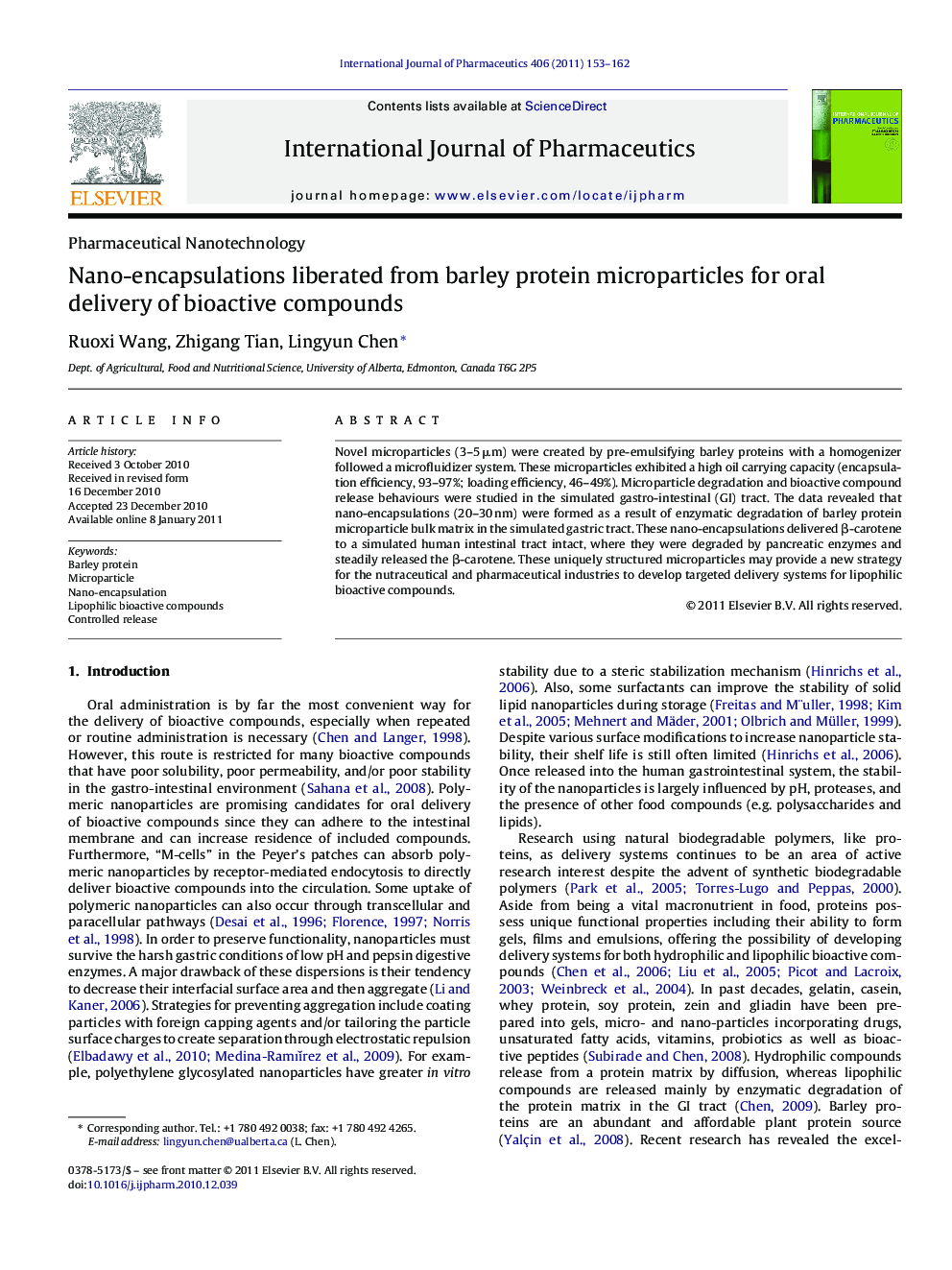| Article ID | Journal | Published Year | Pages | File Type |
|---|---|---|---|---|
| 2503743 | International Journal of Pharmaceutics | 2011 | 10 Pages |
Novel microparticles (3–5 μm) were created by pre-emulsifying barley proteins with a homogenizer followed a microfluidizer system. These microparticles exhibited a high oil carrying capacity (encapsulation efficiency, 93–97%; loading efficiency, 46–49%). Microparticle degradation and bioactive compound release behaviours were studied in the simulated gastro-intestinal (GI) tract. The data revealed that nano-encapsulations (20–30 nm) were formed as a result of enzymatic degradation of barley protein microparticle bulk matrix in the simulated gastric tract. These nano-encapsulations delivered β-carotene to a simulated human intestinal tract intact, where they were degraded by pancreatic enzymes and steadily released the β-carotene. These uniquely structured microparticles may provide a new strategy for the nutraceutical and pharmaceutical industries to develop targeted delivery systems for lipophilic bioactive compounds.
Graphical abstractFigure optionsDownload full-size imageDownload as PowerPoint slide
